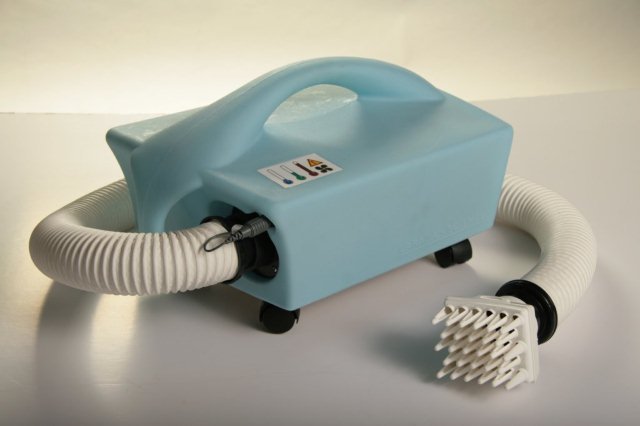AirAllé®History of the AirAllé® Lice Device
The AirAllé® device concept originated in the laboratory of Dr. Dale Clayton at the University of Utah, where he is a professor in the Department of Biology. It was originally called the LouseBuster.
Most research in Clayton’s lab concerns basic aspects of the biology of birds and their feather lice. During the 1980’s and early 1990’s Dr. Clayton successfully cultured lice on captive birds, such as common pigeons, for basic research purposes. However, when he moved his lab to the University of Utah in 1996, from Oxford University in England, he encountered great difficulty keeping lice alive on captive birds. Perplexed, he consulted colleagues working on other small insects, such as fruit flies. He was informed that, because of Utah’s arid climate, they too had difficulty keeping insect cultures alive. The large surface to volume ratio of these small insects apparently makes them vulnerable to desiccation in such an arid climate. One solution was to install steam lines in insect culture rooms to increase the ambient humidity. Upon installing such lines in his bird rooms, Clayton found that the problem was resolved and feather lice were relatively easy to culture.
Around this time, Dr. Clayton’s elementary school children contracted head lice that appeared to be resistant to chemical shampoos. Clayton’s experience with pigeon lice suggested it might be possible to control head lice by reducing the level of humidity near the scalp. The question was how to accomplish this trick. Over the next several years a variety of methods were tested in Clayton’s lab, ranging from the use of chemical desiccants, to heat caps fitted with electrodes, to rice bag caps heated in a microwave, to various hair dryers and blowers up to the size of a leaf blower (don’t try this at home). These approaches were tested on student volunteers in the lab – including Clayton’s own children – many of whom were temporarily infested with small numbers of head lice that could be removed quickly with a nit comb at the end of each test.
These tests showed that it is not feasible to control head lice using existing hair dryers. Although bonnet-style hair dryers heat the hair and scalp, static heated air does not kill lice (unless it is much hotter than a person can tolerate). A combination of heat and considerable airflow is required to desiccate the lice. But conventional blow driers do not work well either. This is because they tend to mat the hair, effectively protecting the lice from the effects of the moving, hot air. Hair dryers are also dangerously hot and can cause burns, especially if they are used to direct hot air for a long period of time on one location as is needed to treat head lice.
Following months of tinkering, it looked likely that it might be possible to kill head lice and their eggs with a novel, custom- built device that combines fast-moving heated air, a precise angle of application, and the right duration of treatment. Working out the specifications required a good deal more experimentation over many more months using custom-engineered LouseBuster prototypes. The culmination of this work was the publication in 2006 of a paper in the journal Pediatrics reporting data on the relative success of the different kinds of hair dryers, compared to the LouseBuster device, for killing head lice and their eggs. An accompanying press release by the University of Utah generated a feeding frenzy of worldwide media attention that validated widespread interest in such a device, and the critical need for it.
Lice Clinics of America, Inc., which incorporated in 2006, formed to take the LouseBuster product to market.
A follow-up study was published in the Journal of Medical Entomology in 2011 that showed the LouseBuster was highly effective at killing lice and eggs, even in the hands of novices.














